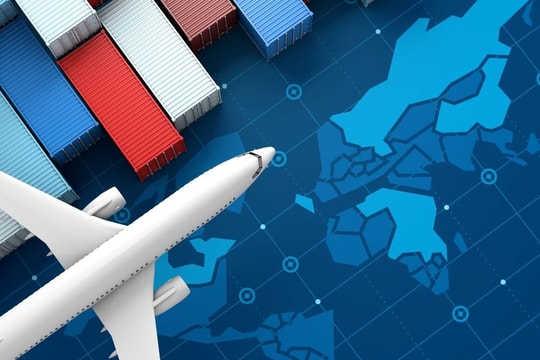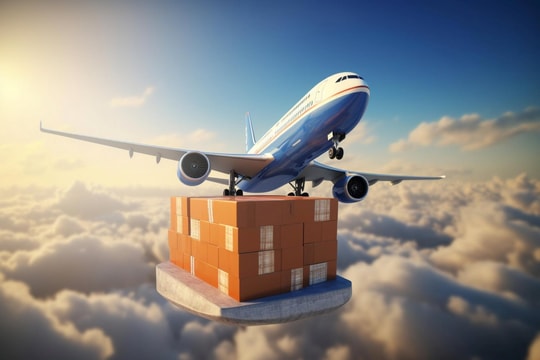
Multimodal logistics emerges as a comprehensive optimization solution—allowing businesses to control costs while maintaining reliability throughout the supply chain.
Optimal Scenarios During Supply Chain Disruptions
In major crises such as the COVID-19 pandemic, the Suez Canal blockage, the Russia–Ukraine war, or fuel cost inflation, companies realized one truth: no single mode of transport is entirely “safe.” Instead of relying on a fixed transport route, multimodal logistics allows companies to build flexible alternative scenarios. When maritime routes are disrupted, they can quickly shift to road and rail combinations. When air freight is limited due to reduced flights, goods can be trucked to nearby airports. This structure not only adds flexibility but also “buys time” for companies to adjust production, sales, and delivery plans accordingly.
A notable example was during the 2021 Suez Canal blockage, when many Southeast Asian companies rapidly switched to combined routes through transshipment ports in Singapore, Malaysia, and India to reach Europe instead of waiting for vessels to resume. This not only ensured delivery timelines but also cut costs by up to 30% compared to the original route.
Considering TCO (Total Cost of Ownership)
A common mistake businesses make is comparing only per-unit transport costs—for example, cost per kilometer for road freight is cheaper than air freight, or sea freight appears cheaper than rail. In reality, companies should assess the Total Cost of Ownership (TCO), which includes not just transport fees, but also warehousing, insurance, risk handling, operational time, and even brand reputation.
A seafood exporter choosing a cheap sea route that adds ten extra days may incur higher cold storage costs, spoilage risk insurance, and miss peak sales opportunities. In contrast, by leveraging multimodal logistics—such as using refrigerated trucks to the nearest port, sea transport to a major terminal, and domestic rail to the distribution point—the company can optimize total cost while maintaining customer delivery commitments.
TCO becomes even more critical for industries with low margins, short product life cycles, or stringent delivery time requirements—such as electronics, fashion, and fresh produce. Well-designed multimodal transport models can deliver far greater value than single-route solutions.

Collaborating with 3PL/4PL: Strengths and Risks
Implementing multimodal logistics requires tight coordination among many parties—from carriers and transshipment hubs to documentation handlers and real-time monitoring platforms. As such, the roles of third-party (3PL) and fourth-party logistics providers (4PL) are increasingly important. They not only provide transportation services but also contribute to network planning, solution design, and even full supply chain management on behalf of clients.
3PL and 4PL providers can integrate multiple transport routes, leverage surplus capacity, and invest in technologies such as Transportation Management Systems (TMS), GPS tracking, and real-time cargo monitoring platforms—allowing businesses to avoid heavy capital investment in their own infrastructure.
However, over-reliance on these providers also carries risks—especially when there is a lack of clear performance indicators (KPIs), transparent control mechanisms, and coordinated incident response systems. There have been cases where companies were “held hostage” by providers who failed to meet schedules or did not provide timely information during disruptions.
Therefore, selecting 3PL/4PL partners should not be based solely on price or scale, but rather on integration capabilities, responsiveness, and a long-term collaborative mindset. Businesses should also establish clear KPIs, transparent contracts, and regularly review performance to ensure ultimate control remains with them.
In a world where global supply chains continue to face unpredictable volatility, multimodal logistics is not merely a technical solution—it is a strategic mindset that must be embedded from the operational planning level. While businesses cannot control all external risks, they can control their ability to respond by adopting a flexible and optimized logistics model.
We believe that multimodal logistics is the answer to balancing cost and reliability in modern supply chains. But to apply it effectively, companies must view logistics not merely as a cost factor, but as a value component that shapes customer experience and sustainable competitiveness. An optimal transport model doesn’t just get goods to the right place at the right time—it opens the path for businesses to move faster and farther on the global trade map.


.jpg)





.png)
.png)
.png)


.png)
.png)






.png)

